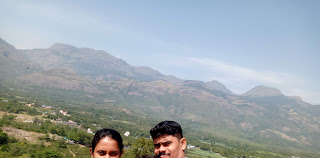Kanthalloor is a village in Idukki district in the Indian state of Kerala.
It is a village nestled in the Western Ghats of India.
The salubrious climate and the picturesque landscapes and wide variety of tropical crops coupled with the close proximity of Munnar, has transformed this village into a tourist destination.

Facts at a glance
Location: Southern Central KeralaDistrict: Idukki
Nearest towns: Munnar (40 kms) and Maryoor (14 kms.)
Bus Station: Munnar ( 40 Kms.)
Taxi Hire: Munnar Town ( 40 Kms.)
Railway Station: Eranakulam Railway Station (155 kms.)
Air port: Cochin International Airport (145 Kms.)
 |
| guide i got from kanthaloor |
Food Options: Restaurants at Marayoor town. More choice at Munnar.
Nearby Attractions: Chinnar Wildlide Sanctuary, Marayoor, Manavan Shola, Periyar
Tiger Reserve, Kumali, Munnar, Devikulam, Peerumedu, Eravikulam National Park,
Mattuppetty, the Arch dam, Idukki wildlife sanctuary, Anamudi, Eco Point, Top
Station, Waterfalls of Cheeyappara, Valara, Thommankuthu, Keezharkuthu, Attukal
and Chellarkovil, Carmalagiri elephant walk, Anachal, Malankara reservoir,
Mangala Devi Temple, Meenuli, Kundala dam and Kalvari Mount.
 |
Kanthaloor is famous for its wide variety of crops which is not seen on the other parts of kerala, which includes varieties of Apple,
 orange,
Strawberry,
orange,
Strawberry,
Blackberry, Plums, Gooseberry, Egg fruits, peach &
passion fruits..etc.
 |
| orange |
Accommodation Options: Farm stays and resorts at Kanthaloor. Resorts, hotels and home stays in Marayoor. There are resorts and home stays in Kanthalloor or else you could stay at Munnar.
we stayed in SHOLA HEAVAN ....its best natur's buety place with calm environment in the base of mountain
with good staff and facilites
 |
| view from my room |
 |
| breafast at canteen |
 |
| with my kid |
>>----THANKS FOR VISITING MY BLOG...KEEP IN TOUCH------>




























